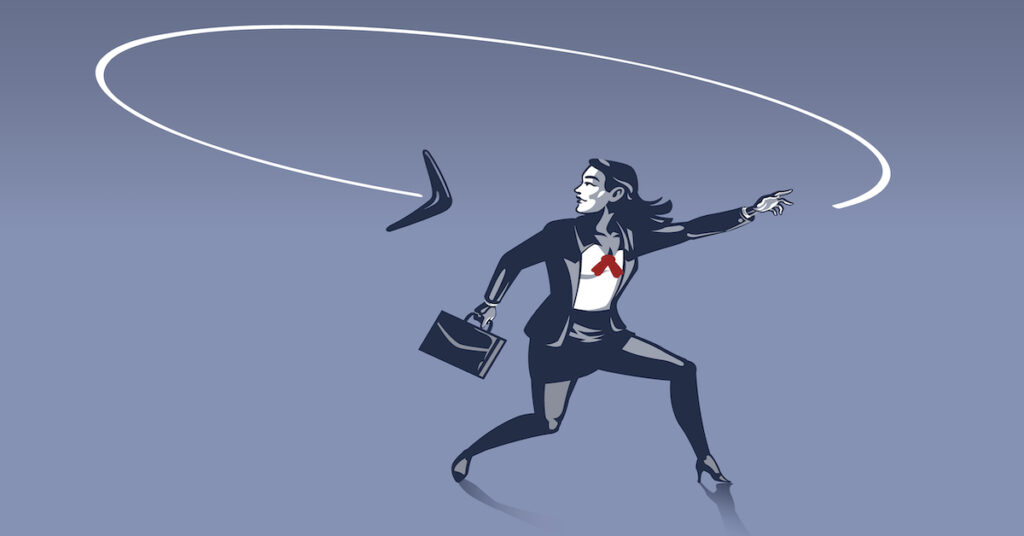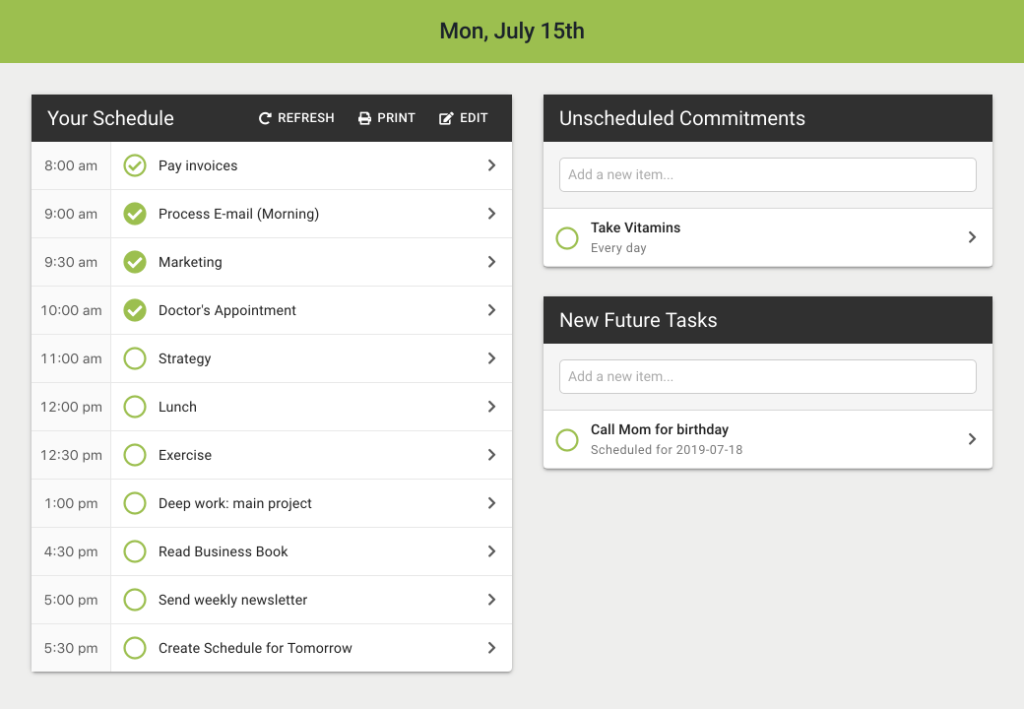Often, it’s easier for us to see the damage done by outside forces and ignore our own actions that lead to bad outcomes and habit building.
In this article, we’re tackling the concept of throwing boomerangs, how they affect you and what you can do to master it.
Not that Kind of Boomerang
We all know what a boomerang is: a bent piece of wood that is thrown the right way, and returns to the thrower.
What if we told you that you were throwing them and you didn’t even know it?
You don’t even own one?!
That’s okay because this type of boomerang we’re talking about is a bit different. This boomerang is an action that you take when you throw something out in the world and you reasonably expect it to come back to you.
For example, you leave a voicemail to your colleague and then they call you back. These are boomerangs that come back to us. The problem is that they might not return to us at the most desired time and they end up causing interruptions.
Deep Work and Boomerangs…Not a Love Story
You’re ready to dive into deep work. Everything is planned and you know what to do.
But then you decide to do something before you start: you decide to reply to a couple of emails or leave a few voice messages. Sounds harmless, right?
What you’ve done here, in fact, is you’ve set yourself up for incoming distractions.
Some of those emails, messages, and calls will return at the worst moment and interrupt your deep work. You take breaks to check your notifications, maybe even take further action and reply to the senders and your focus is gone.
What’s a good solution in this case?
Send these boomerangs AFTER deep work. This will allow you to wrap up what you’re working on and then safely “catch” the boomerangs.
You can also set expectations that they won’t receive an immediate reply from you if they write you back. By simply telling the receiver of your boomerang when you’ll be available, you’re lowering the risk of being interrupted shortly after the boomerang is sent.
Safely Catching VIP Boomerangs
Sometimes you’ll get boomerangs that you NEED to catch, let’s say an email from your biggest customer.
What do you do in this case?
We suggest you use the power of the Three A’s:
- Acknowledge. First acknowledge: “Hey, I received your email.”
- Ask. Make sure you don’t assume and ask the client what the priority is on the task.
- Answer. You send a second email that answers their question.
Harness your Superpower
Yes, you can be a real-life superhero if you follow the next steps.
Maybe you won’t save an entire city from an extraterrestrial force, but you will be able if you harness your superpower to cause fewer interruptions in your workflow.
What’s your superpower?
Putting these boomerangs in slow motion.
Next time you get that important email from your VIP customer, don’t just drop everything and switch to it immediately.
Take 5-10 min to wrap up what you’re doing and then switch.
It’s unlikely that those 10 extra minutes will make a ton of difference for the receiver, but they will affect your work if you leave everything aside to send a fast reply.
Being More Mindful
We often create the conditions for our own interruptions by sending boomerangs into the world at inopportune times.
Does this mean you shouldn’t send boomerangs at all?
No, it just means that we should all be more conscious about what leads to distractions and interruptions in our day-to-day lives.
Let’s stop with the self-sabotage and make incremental small changes that inevitably lead to building better habits.








